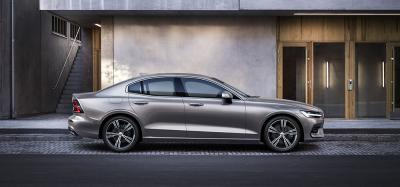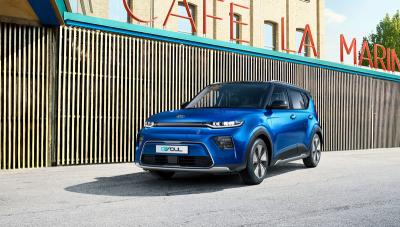Not the first nor the last, and not even the only one. Let me explain. The second series of the successful Japanese city car, extremely popular in cities throughout the globe, was introduced at the end of 2014 replacing the first series dated 2005, only to be soon replaced by the 2018 model year, with a face lift that, given the distinctive looks of the 2014 model, no one really felt the need for. Not to mention that, the TNCA platform (Toyota New Global Architecture), shared with the French PSA group, spawned a series of city cars which includes Citroën C1 and Peugeot 108, which have enjoyed similar success especially on the European market.
However this has in no way hindered, even at our latitudes, the successful distribution of Toyota’s Aygo, characterized by a rather unique design for a car of this segment, surprisingly functional with its less than 3.5 metres in length, little more than 1.6 metres in width and 1.46 metres in height, boasting a wide array of accessories making it fully customizable.
So similar yet so different
So, are we looking at a standardized vehicle design? Not really, given that, if the two French city cars differ in a number of aesthetic features, i.e. headlights and interiors designed to enhance a family feeling boasting also custom made wheels, the Aygo can count on a very distinctive front grille with a rather original X design. The reduced overhangs, made possible by a 234 cm wheelbase, are flawlessly linked to high sides that greatly reduce the size of the windows, with a 3 and 5-door design wide enough to facilitate access, while the rear section, dominated by rather ordinary vertical headlights, is characterized by what may appear to be an air extractors commonly found on “sportier” coupes and GTs. In other words, an urban vehicle with an attitude, appealing to a young clientele, both male and female, looking to purchase their first car, and appreciated by young and older motorists alike.
Certainly the infinite possibility of combinations between colours, different adhesive aesthetic inserts for the roof, the front and rear view mirror caps as well as a wide choice of interior trims, are perfect to infuse a personal touch so as to feel the car as your own. Although the overall quality of Toyota’s urban traveller is in line with other models in the segment, several features such as a 7-inch multifunction display, navigation maps and a handy voice control for onboard functions, have been entrusted with raising the bar, along with a retractable roof, for those who enjoy that “en plain air” feeling. Speaking of safety, smart systems such as Toyota SafetySense, based on cameras and laser sensors, are integrated by additional Lane Departure Alert and Pre-Collision System to alert the driver when inadvertently changing lanes or by independently activating the emergency braking.
As expected, inside we find a stereo system with radio, USB port and bluetooth connection, a multimedia system with touch-screen, manual or automatic air conditioning and rear view camera, useful when it comes to squeezing into tight spaces, thanks also to the minute overall dimensions and a steering diameter - aided by a power steering system – of less than 10 metres.
The price to pay for such a small size, though appreciable when negotiating the chaotic traffic of a city, is having very little loading space in the boot, exactly 168 litres, barely enough for four shopping bags despite the absence of a spare wheel.
The single option
A single engine option appears to be sufficient here. With Turbodiesel engines now out of the picture, at least as far as Toyota is concerned, and present on the first version of the Japanese city car as an alternative, the current version of the Aygo (rumours have it that the unveiling of the new model is imminent) relies solely on a Euro 6 approved one-litre, three cylinders in line, petrol engine. A modern and lightweight engine, entirely in aluminium, and equipped with a double overhead camshaft with 4-valve distribution and variable timing VVT-i. A choice that should satisfy everyone, thanks to a power output of 69 hp at 6,000 rpm, with maximum torque of 9.68 kgm at 4,300 rpm, enough to dart from the traffic lights and sufficiently elastic in frequent changes of speed which are managed through either a traditional 5-speed manual transmission or a sequential automatic gearbox - the same transmission really, only automated - also available with steering paddle shifters behind the wheel - in this case one might be forgiven for thinking to be at the wheel of a racing car -. In both cases performance is far from disappointing, thanks to an un-laden mass of 855/860 kg, with an acceleration from 0-100 km/h in 14.2 and 15.5 seconds, respectively, and a top speed of 160 km/h for both. Anything but “thirsty”, both versions guarantee above 20 km/litre fuel consumption, 24.4 and 23.8 respectively.
The updated structure benefits from high-tensile steels which guarantee improved rigidity compared to the past, reducing as far as possible the vehicle's tare, pretty low indeed. The simple suspension system provides for a classic mixed independent wheels at the front and a torsion beam at the rear, which came in handy in trying to reduce the under-body’s mechanical clutter gaining a little more breathing space for the passengers.
The reliable mechanical parts are aided, as one would expect, by the usual riot of drive assist systems such as Abs and Ebd (Electronic Brake-Force Distributor), Vsc electronic stability system and Traction control disconnectable via a button on the dashboard, not to mention Hill start assist control and, as already mentioned, Toyota’s X-Safety anti-collision system.
The standard versions are flanked by an "Eco" variant, equipped with low rolling resistance tires, a Start & Stop system and a particularly long fourth and fifth gear ratio.
Although the registration documents includes a 14-inch wheel, all Aygo’s are equipped with 15” steel or aluminium alloy wheels, with tires that leave no room for appearances; here the only option available is a 165/60 which proves a decidedly balanced choice as far as handling, performance and consumption are concerned. The only possible alternative lies in wheel design, with X-Style rims.

A personal style dominated by a conspicuous X-shaped front grille, with several accessories available and colour combinations, draws a clear line of separation with other city cars

The passenger compartment is extremely small, yet able to guarantee enough room for all four occupants, while the boot has space suitable for small loads only

-

The wheels supplied as OEMs include only one possible choice possible, 15-inch steel or alloy wheels, in different styles, with 265/60 R15 tires

Equipped with Toyota's three-cylinder 4-valve engine with variable valve timing, the Aygo comes with a single 69-horsepower unit, just enough to move around in traffic easily while keeping costs and consumption at bay









